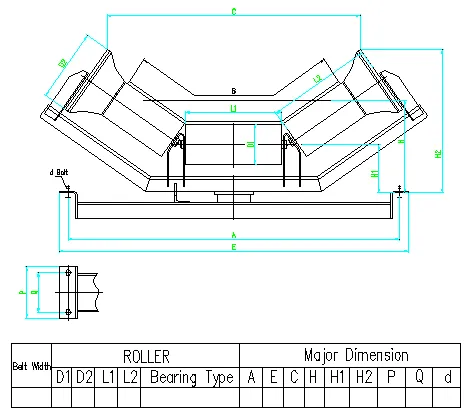 Afrikaans
Afrikaans  Albanian
Albanian  Amharic
Amharic  Arabic
Arabic  Armenian
Armenian  Azerbaijani
Azerbaijani  Basque
Basque  Belarusian
Belarusian  Bengali
Bengali  Bosnian
Bosnian  Bulgarian
Bulgarian  Catalan
Catalan  Cebuano
Cebuano  Corsican
Corsican  Croatian
Croatian  Czech
Czech  Danish
Danish  Dutch
Dutch  English
English  Esperanto
Esperanto  Estonian
Estonian  Finnish
Finnish  French
French  Frisian
Frisian  Galician
Galician  Georgian
Georgian  German
German  Greek
Greek  Gujarati
Gujarati  Haitian Creole
Haitian Creole  hausa
hausa  hawaiian
hawaiian  Hebrew
Hebrew  Hindi
Hindi  Miao
Miao  Hungarian
Hungarian  Icelandic
Icelandic  igbo
igbo  Indonesian
Indonesian  irish
irish  Italian
Italian  Japanese
Japanese  Javanese
Javanese  Kannada
Kannada  kazakh
kazakh  Khmer
Khmer  Rwandese
Rwandese  Korean
Korean  Kurdish
Kurdish  Kyrgyz
Kyrgyz  Lao
Lao  Latin
Latin  Latvian
Latvian  Lithuanian
Lithuanian  Luxembourgish
Luxembourgish  Macedonian
Macedonian  Malgashi
Malgashi  Malay
Malay  Malayalam
Malayalam  Maltese
Maltese  Maori
Maori  Marathi
Marathi  Mongolian
Mongolian  Myanmar
Myanmar  Nepali
Nepali  Norwegian
Norwegian  Norwegian
Norwegian  Occitan
Occitan  Pashto
Pashto  Persian
Persian  Polish
Polish  Portuguese
Portuguese  Punjabi
Punjabi  Romanian
Romanian  Russian
Russian  Samoan
Samoan  Scottish Gaelic
Scottish Gaelic  Serbian
Serbian  Sesotho
Sesotho  Shona
Shona  Sindhi
Sindhi  Sinhala
Sinhala  Slovak
Slovak  Slovenian
Slovenian  Somali
Somali  Spanish
Spanish  Sundanese
Sundanese  Swahili
Swahili  Swedish
Swedish  Tagalog
Tagalog  Tajik
Tajik  Tamil
Tamil  Tatar
Tatar  Telugu
Telugu  Thai
Thai  Turkish
Turkish  Turkmen
Turkmen  Ukrainian
Ukrainian  Urdu
Urdu  Uighur
Uighur  Uzbek
Uzbek  Vietnamese
Vietnamese  Welsh
Welsh  Bantu
Bantu  Yiddish
Yiddish  Yoruba
Yoruba  Zulu
Zulu cushion roller
The Role of Cushion Rollers in Modern Manufacturing Processes
Cushion rollers are an essential component in various industrial applications, playing a vital role in enhancing productivity and efficiency in manufacturing processes. These specialized rollers, designed to absorb shock and reduce friction, are increasingly embraced in situations requiring the smooth handling of materials. This article delves into the significance, types, and advantages of cushion rollers, highlighting their contribution to contemporary manufacturing landscapes.
Understanding Cushion Rollers
Cushion rollers are typically constructed from resilient materials that can absorb impacts and sustain heavy loads. They are primarily utilized for conveying items along assembly lines, packaging systems, and transportation mechanisms within factories. The cushioning effect helps in lowering vibration and shock, thereby extending the lifespan of both the roller and the machinery it supports.
These rollers come in various configurations, often customized to meet the specific needs of particular industries. For instance, some cushion rollers might be designed with softer surfaces to handle delicate materials, while others might feature more robust materials for heavy-duty applications.
Types of Cushion Rollers
1. Polyurethane Cushion Rollers Known for their durability and resistance to wear, polyurethane cushion rollers are extensively utilized in industries such as automotive and packaging. Their ability to withstand harsh environmental conditions makes them suitable for outdoor use.
2. Rubber Cushion Rollers These rollers provide excellent traction and grip, making them ideal for applications where slippage could be a concern. Their elasticity helps in absorbing shocks effectively, ensuring that products are conveyed without damage.
3. Spring-loaded Cushion Rollers Featuring internal spring mechanisms, these rollers automatically adjust to varying loads and heights. They are particularly valuable in dynamic environments where the height of the items being conveyed may fluctuate.
cushion roller

Advantages of Using Cushion Rollers
The implementation of cushion rollers brings several advantages to manufacturing processes
1. Enhanced Product Protection One of the primary benefits of cushion rollers is their ability to minimize damage to fragile products during handling and transportation. By absorbing shocks and vibrations, cushion rollers help maintain product integrity.
2. Increased Lifespan of Equipment The cushioning effect reduces wear and tear on machinery, contributing to longer operational lifespans and fewer maintenance checks. This leads to lower replacement costs and improved overall efficiency.
3. Improved Efficiency Cushion rollers enhance the flow of goods through production lines, allowing for a more streamlined operation. With their ability to accommodate various loads and package shapes, they facilitate swift transitions between different stages of manufacturing.
4. Sound Dampening In addition to their mechanical benefits, cushion rollers can also play a role in reducing noise levels within manufacturing environments. The absorbent materials can help dampen sounds produced during the movement of goods, creating a more conducive working atmosphere.
5. Customization Options With advancements in material science, cushion rollers can be tailored for specific applications. Manufacturers can select the appropriate materials and design features that align with their unique operational needs.
Conclusion
Cushion rollers are an indispensable asset in the realm of manufacturing, marrying functionality with innovation. Their ability to protect products, enhance efficiency, and extend the life of equipment makes them a critical component across diverse industries. As manufacturing technologies continue to evolve, the role of cushion rollers will likely expand further, underscoring their importance in the quest for optimized production processes and sustained growth. In an increasingly competitive marketplace, companies that invest in high-quality cushion rollers are likely to reap the rewards of improved operational performance and product quality.
-
Revolutionizing Conveyor Reliability with Advanced Rubber Lagging PulleysNewsJul.22,2025
-
Powering Precision and Durability with Expert Manufacturers of Conveyor ComponentsNewsJul.22,2025
-
Optimizing Conveyor Systems with Advanced Conveyor AccessoriesNewsJul.22,2025
-
Maximize Conveyor Efficiency with Quality Conveyor Idler PulleysNewsJul.22,2025
-
Future-Proof Your Conveyor System with High-Performance Polyurethane RollerNewsJul.22,2025
-
Driving Efficiency Forward with Quality Idlers and RollersNewsJul.22,2025





























